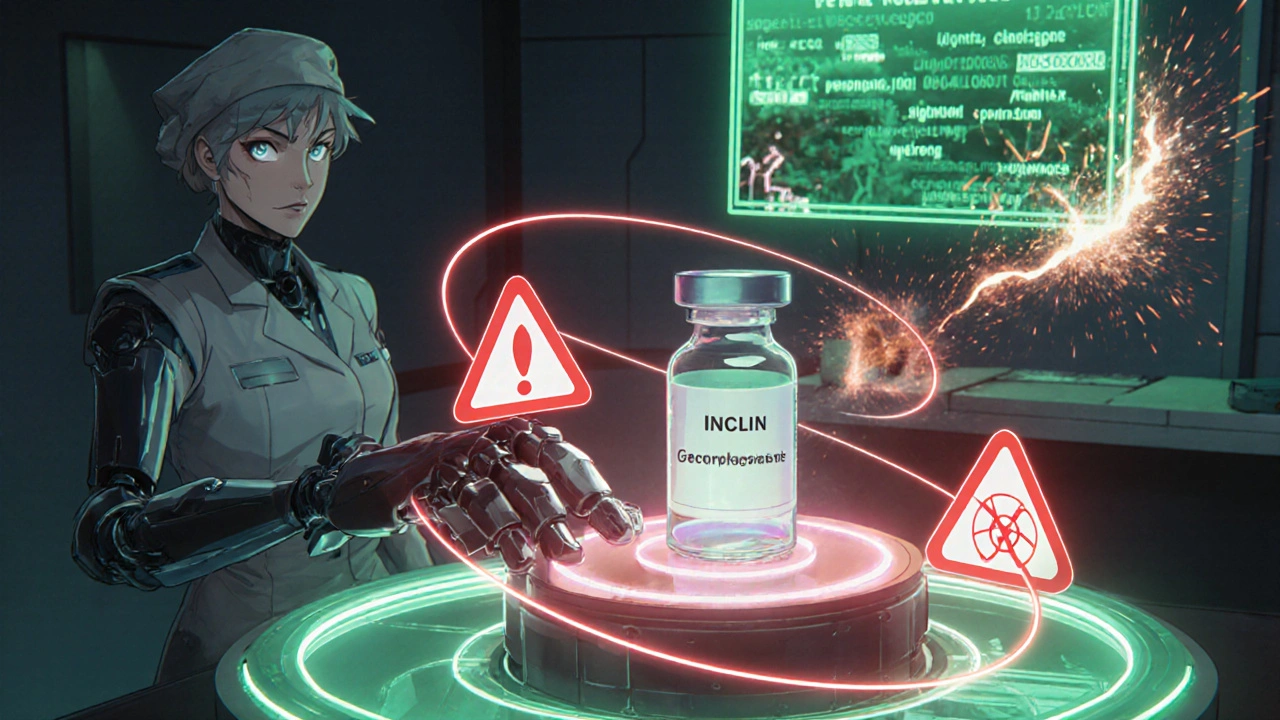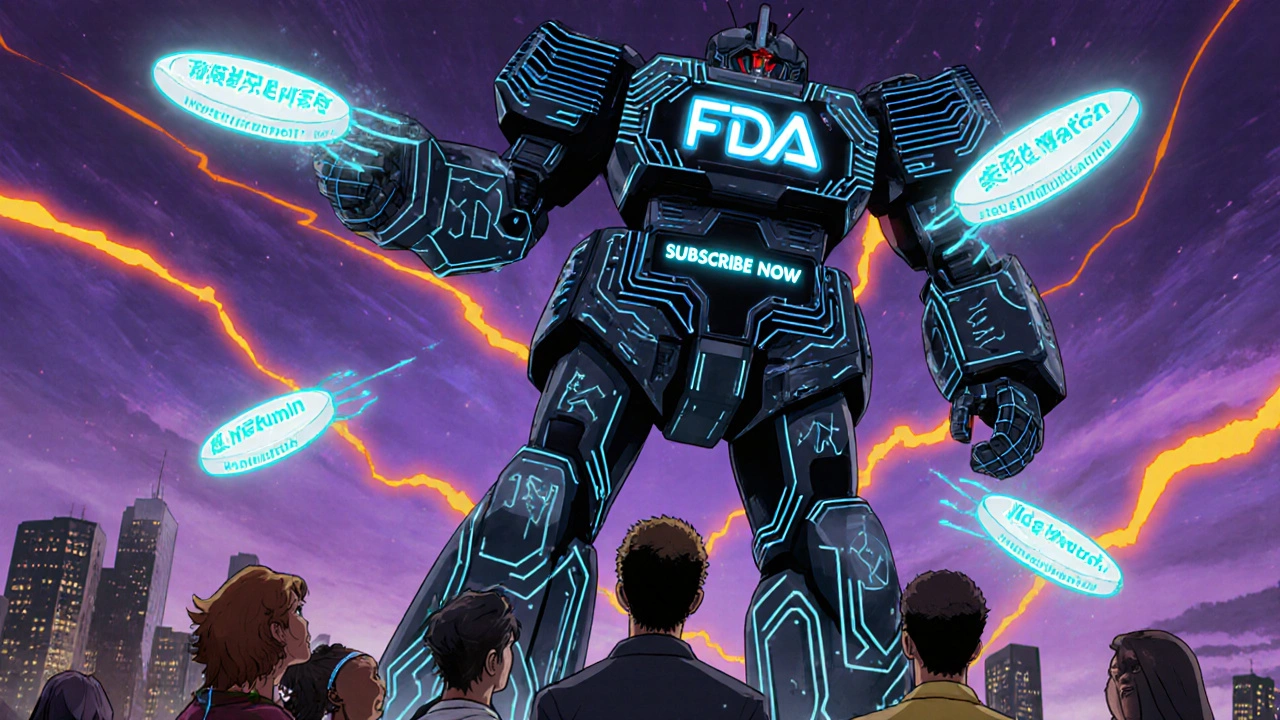When a medication becomes unsafe - whether it’s contaminated, mislabeled, or linked to serious side effects - time matters. The U.S. Food and Drug Administration (FDA) doesn’t wait weeks to warn the public. They send out alerts within hours. But only if you’re signed up.
Most people don’t realize the FDA runs three separate, free alert systems that notify you about drug recalls, safety warnings, and label changes. And if you’re taking prescription meds, managing a chronic condition, or work in healthcare, not subscribing is like driving without a seatbelt. You might be fine - until you’re not.
What the FDA Alerts Actually Cover
The FDA doesn’t just track bad pills. Their systems cover everything from insulin batches with wrong labels to cough syrups contaminated with toxic chemicals. There are three main types of alerts:
- Enforcement Report Subscriptions - These are recall notices. If a drug is pulled from shelves because it’s tainted, mispackaged, or mislabeled, you’ll get an email. This is the only system that lets you set custom keywords like "insulin" or "peanut" to filter alerts.
- Drug Safety Communications - These are safety warnings that don’t always mean a recall. Think: "This diabetes drug may increase heart attack risk" or "Avoid this antibiotic if you have kidney disease." These are meant for patients and providers to adjust treatment.
- MedWatch Safety Alerts - This is the FDA’s oldest system. It includes both recalls and safety notices, and you can get them via email, Twitter, or RSS. It’s broad, but less targeted than the other two.
Here’s the key difference: Enforcement Reports tell you when a product is pulled. Drug Safety Communications tell you when a drug might harm you - even if it’s still on the shelf.
How to Subscribe - Step by Step
Signing up takes less than five minutes. But you need to do it for each system. They don’t talk to each other.
1. Enforcement Report Subscription (For Recalls)
Go to fda.gov/enforcement-report-subscription. Enter your email. Then pick what you want alerts for. Most people choose "Drugs." You can pick more than one category - medical devices, cosmetics, food - but if you’re focused on medications, stick with drugs.
Now, the powerful part: add up to five keywords. Type in the exact names of your meds - like "metformin," "lisinopril," or "warfarin." Or if you have allergies, add "peanut," "sulfate," or "dye." Every time a recall matches one of those words, you get an email. No fluff. Just the alert.
Choose daily or weekly delivery. Daily is better if you’re a pharmacist or manage multiple prescriptions. Weekly works if you’re a patient checking in once a week.
2. Drug Safety Communications (For Safety Warnings)
Visit fda.gov/drugs/drug-safety-and-availability/drug-safety-communications. Scroll down. Click "Sign up for email alerts." Enter your email. Done.
You’ll get alerts about new risks, dosage changes, or black box warnings. These are the alerts that make doctors change prescriptions. If you’re on a high-risk medication, this is non-negotiable.
3. MedWatch E-list (The Broad Catch-All)
Go to fda.gov/medwatch-email-list. Fill out the form. You can also follow @FDAMedWatch on Twitter - they post alerts there within minutes of release. RSS feeds are available too, if you use a feed reader.
This one doesn’t let you filter by keyword. It’s a firehose. But it’s good backup. If you miss an alert from the other two, MedWatch might catch it.
Why This Matters - Real Stories
In 2023, a hospital pharmacist in Ohio got an Enforcement Report alert about a recalled batch of insulin. The batch number matched one in their fridge. They quarantined 47 vials before any patient used them. That alert saved lives.
A mother in Texas subscribed after her child had a reaction to a cough syrup. She set a keyword for "propylene glycol." Months later, she got an alert: a common children’s cough medicine was found to contain a toxic contaminant. She checked the label. Her bottle was safe. She threw out the old one and bought a new one - because she knew to look.
But here’s the problem: 72% of pharmacists and 82% of hospitals subscribe. Only 17% of patients do. That’s not a system failure. That’s a knowledge gap.

What the FDA Isn’t Doing - And What They’re Fixing
These systems are free and reliable. But they’re clunky. You need three different sign-ups. You get too many alerts. Some are vague. And there’s no app.
The FDA knows this. In 2024, they started testing a new system that uses machine learning to sort alerts by urgency. In a pilot, healthcare workers reported 32% less alert fatigue. That means fewer ignored emails.
By late 2025, they plan to:
- Combine all three alert systems into one dashboard
- Double the number of keywords you can use - from five to ten
- Launch a mobile app for push notifications
- Start sending alerts in Spanish - because right now, only 12% of non-English speakers get them, even though they make up 22% of the population
That’s progress. But you don’t have to wait. Subscribe now. Use the tools they have today.
What Commercial Services Offer - And Why You Don’t Need Them
There are paid apps like MedWatcher ($9.99/month) or First Databank ($1,200/year for clinics). They offer push alerts, drug interaction checks, and personalized risk scores.
But here’s the truth: the FDA’s system is faster, broader, and free. Commercial services only track prescription drugs. The FDA tracks over-the-counter meds, biologics, supplements, and medical devices. If a generic painkiller gets recalled because of lead contamination, the FDA will tell you. Most paid services won’t even notice.
And the FDA’s alerts come directly from the source. No middleman. No delay. No corporate filter.
Use the free system. Save your money.

Common Mistakes - And How to Avoid Them
People mess this up all the time.
- Mistake: Signing up for just one system. Fix: Sign up for all three. They cover different things.
- Mistake: Using vague keywords like "painkiller." Fix: Use the exact drug name: "ibuprofen," "acetaminophen," "naproxen."
- Mistake: Thinking "I’ll check the website once a month." Fix: Alerts come fast. Don’t wait. Subscribe.
- Mistake: Not checking your spam folder. Fix: Add fda.gov to your email whitelist.
If you’re a caregiver, a patient on multiple meds, or a healthcare worker - this isn’t optional. It’s essential.
Final Checklist: Are You Covered?
Before you close this page, ask yourself:
- Have I signed up for the Enforcement Report with my drug names as keywords?
- Have I subscribed to Drug Safety Communications?
- Have I signed up for the MedWatch E-list or followed @FDAMedWatch on Twitter?
- Have I added fda.gov to my email safe list?
- Do I know what each system does - and why I need all three?
If you answered yes to all five, you’re ahead of 83% of the population. You’re not just informed. You’re protected.
Are FDA drug safety alerts really free?
Yes. All FDA alert systems - Enforcement Reports, Drug Safety Communications, and MedWatch - are completely free. You only need an email address. No credit card, no subscription fees, no hidden charges.
How fast do FDA alerts come out after a recall is confirmed?
The FDA issues alerts within 4.2 hours on average after a recall is finalized. That’s faster than most commercial services, which take over 8 hours. For high-risk drugs like insulin or blood thinners, alerts can go out even faster - sometimes in under an hour.
Can I get FDA alerts in Spanish?
Not yet - but they’re coming. As of late 2025, Spanish-language alerts are scheduled to launch in Q3 2025. Until then, you can use browser translation tools on the FDA website, but email alerts will still be in English.
What’s the difference between a recall and a safety communication?
A recall means the product is pulled from shelves - it’s removed because it’s dangerous or defective. A safety communication means the drug is still available, but new risks have been found. You might need to change your dose, avoid it if you have another condition, or monitor for side effects. Both are important - but only recalls mean the product is gone from stores.
Should I subscribe if I only take over-the-counter meds?
Absolutely. Many recalls involve common OTC products - like cough syrups, antacids, or pain relievers. In 2023, over 30% of FDA drug recalls were for non-prescription meds. If you use ibuprofen, acetaminophen, or allergy pills, you’re at risk too.
Can I unsubscribe if I get too many alerts?
Yes. Each email has an unsubscribe link at the bottom. But before you do, consider adjusting your keywords or switching from daily to weekly delivery. Many people unsubscribe because they get too many alerts - not because the system isn’t useful.

